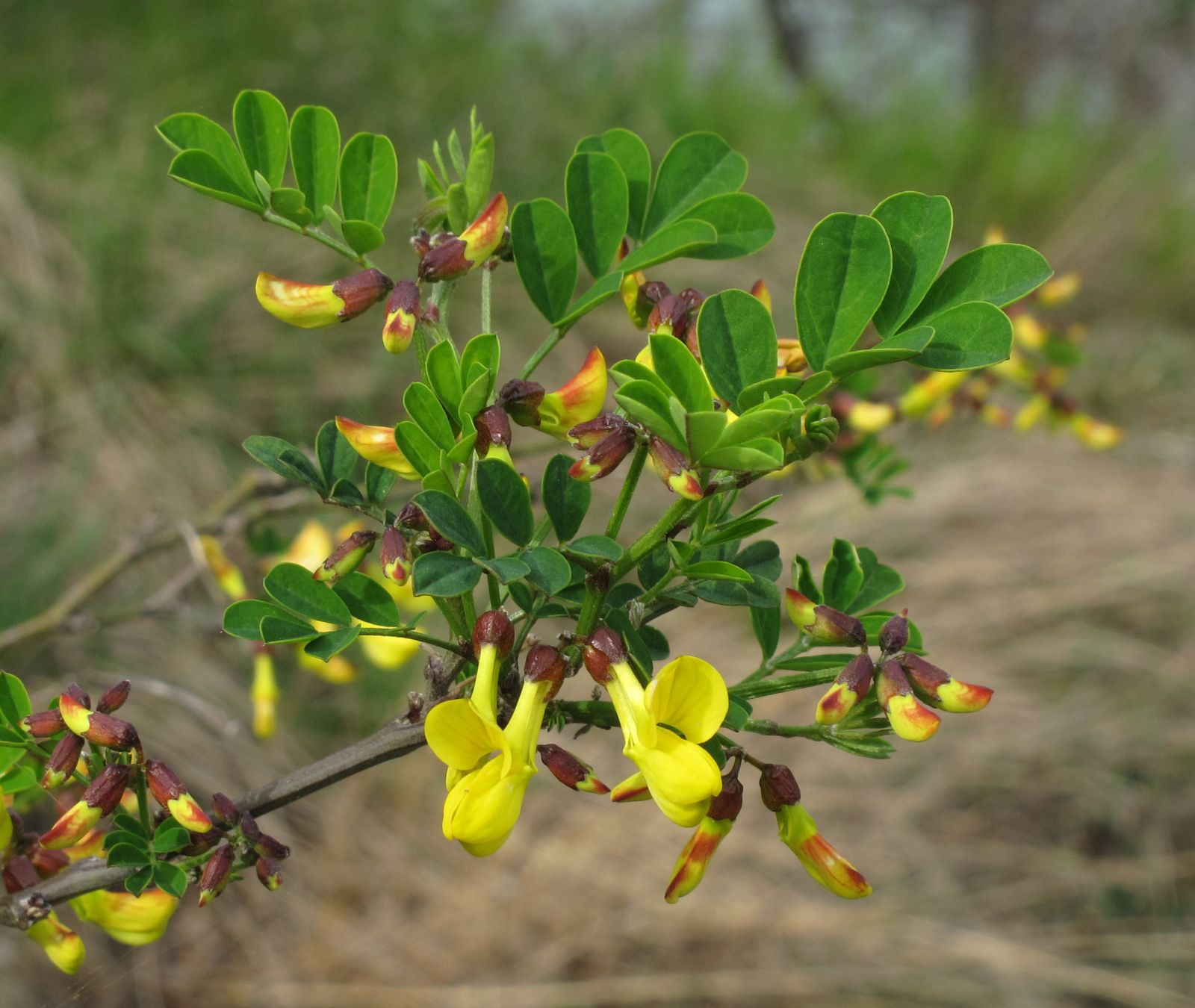Hippocrepis
Sponsor
Kindly sponsored by a member of the International Dendrology Society.
Credits
Julian Sutton (2023)
Recommended citation
Sutton, J. (2023), 'Hippocrepis' from the website Trees and Shrubs Online (treesandshrubsonline.
Family
- Fabaceae
A genus of about 34 species, just one a shrub, the remainder annual or perennial herbs and subshrubs. Leaves imparipinnate; stipules small, linear or lanceolate, free, not dark-tipped. Flowers in axillary umbels or rarely solitary. Bracts 1 per flower, connate to form a toothed involucre, not dark-tipped. Calyx tubular-campanulate, with 5 subequal teeth; corolla lobes 5, yellow; keel acute; 9 stamens united by their filaments to form a tube, the 10th free. Fruits a laterally compressed legume, constricted between seeds; seed bearing segments sometimes strongly curved. (Tutin et al. 1968; Lassen 1989).
We include Hippocrepis only by virtue of H. emerus, a deciduous, medium shrub grown quite widely for its flowers and seed pods. It was formerly known as Coronilla emerus. All other Hippocrepis are herbaceous, or at most sub-shrubby.
Hippocrepis belongs to Tribe Loteae of the Fabaceae, along with genera such as Lotus, Anthyllis and Coronilla. It has in common with Coronilla the curious feature of lomentaceous seed pods, made up of single-seeded sections with seedless constrictions between. In some herbaceous species such as H. comosa, the seeds (and hence the fruit sections enclosing them) are strikingly curved. This gave rise to both the common name Horseshoe Vetch for H. comosa, and to the generic name (from the Greek hippos (horse) and krepis (shoe)). However, in H. emerus (Scorpion Senna) they are more or less straight. The two genera also share regularly imparipinnate leaves with at least two leaflet pairs, well-developed stipules, long petal claws, and an absence of long silky hairs (Lassen 1989). Lassen transferred C. emerus to Hippocrepis having studied a suite of style, stigma, ovule, stamen, bract and stipule characters which individually might seem insignificant. However, this has been widely accepted; indeed, some molecular evidence hints that they might not be sister genera, and that the lomentaceous fruit may have evolved more than once (Degtjareva et al. 2010).


